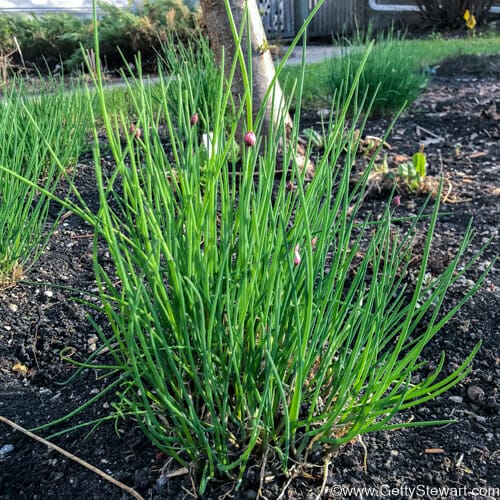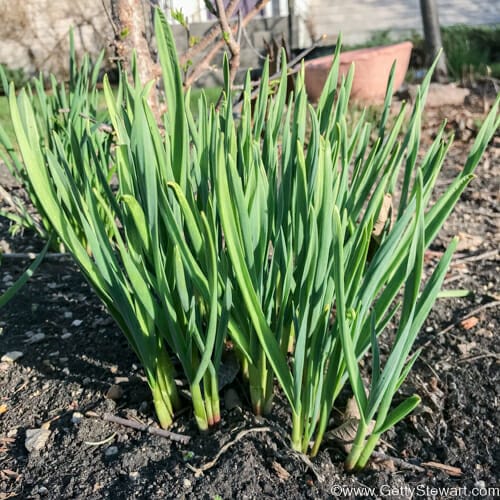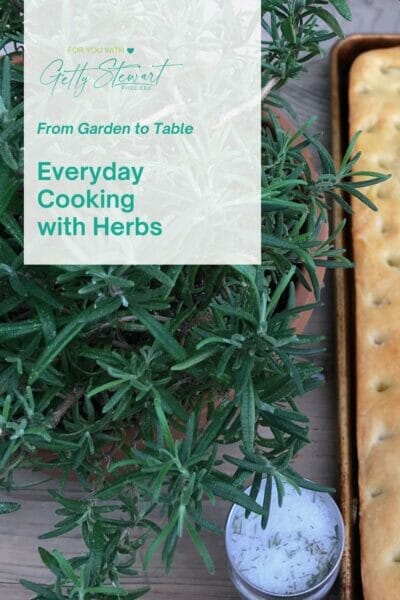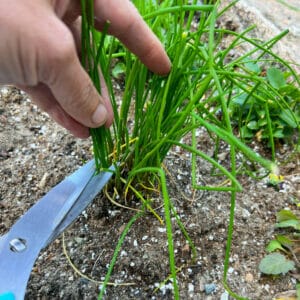Chives, A Classic, Easy to Grow Garden Herb
Chives are one of the easiest garden herbs to grow. There’s nothing like finding their bright green spikes popping through the ground first thing in spring, often when there is still snow all around. After six months of winter, they are indeed a welcome sight.

Also Read: 12 Favourite Chive Recipes, How to Prune Chive Blossoms, Cut & Preserve Chives
Chives are the perfect herb for beginning gardeners. They grow quickly in just about any soil or sun conditions and recover very nicely when harvested for a meal. Their pretty mauve flowers also make a lovely decorative addition to flower beds or tree guilds as shown here.

What are Garden Chives?
- Botanical Name:Allium schoenoprasum
- Flavor: mild onion like flavor
- Appearance: clusters of round, hollow, spear-like leaves, dark green with mauve round flower heads in early summer.
- Height: 20 – 30 cm (10-12 inches)
- Hardiness: Zone 3
- Type: Perennial (return via same roots every year)
- Exposure: thrive in full sun, will do okay in part shade
- Soil Preference: tolerant of all soil types but do like some organic matter
What are Garlic Chives?

Garlic Chives – Allium tuberosum
Garlic chives, sometimes referred to as Chinese chives, are grown and used very much like chives but taste much more like garlic than onions. The leaves are also noticeably different with garlic chive leaves being flat, grass-like blades. Their flowers are tiny white star shapes in globe like groupings that attract beneficial pollinators. Use flowers and leaves in savory dishes where a fresh garlic flavor is desired.

How to Grow Chives
If chives aren’t a part of your garden yet, here’s everything you need to know about growing, harvesting and using chives.
How to Grow & Harvest Chives
Instructions
- Start seed indoors about 8 weeks before last frost date (mid-March in Manitoba) and transfer outside when soil warms in mid May.OR 👇🏼
- Divide existing growth in early spring. Dividing clumps every 3 to 4 years is actually beneficial and will rejuvenate plants.
- How to Harvest: cut leaves 2-3 cm (1 inch) from ground
- When to Harvest: harvest from spring to fall, although they will grow more slowly in the heat of summer
- Best Way to Preserve: best frozen, can be dried, but flavor and color fade quickly. Read Cutting and Preserving Chives.
Video
Notes
Splitting Existing Chives
Video: Split your chives
How to Use Chives in Cooking
Use: in savory dishes, dips, dressings, breads/biscuits, salads, herb butter, egg dishes, potatoes – try these recipes
Do you grow chives? Have any favourite recipes? I’d love to see your chives and favourite recipes. Take a photo, post it on Instagram and tag #getgettys so I can see it and like it!

Be confident growing and using herbs.
With NO ads, and all the best tips & recipes in one convenient place! From Garden to Table: Everyday Cooking with Herbs.
65 recipes & preserves + practical tips…
- how to grow herbs
- step-by-step harvesting and preserving instructions
- tantalizing tea and beverage recipes
- mouth watering appetizers, salads, mains, and desserts
- solve all your herb FAQs
Available in ebook and paperback formats.
Select, store and serve seasonal food for everyday cooking with Getty. Getty is a food educator and Professional Home Economist, who loves sharing tips and recipes following the seasons from her Canadian kitchen. Sign up to get seasonal tips and recipes delivered to your inbox. Learn more about Getty or check out her books and pdf guides.





Is late May in zone 6 south central Kentucky too late to late to divide chives? If so do I have to wait until next spring? Thanks for all the helpful info you share.
Hi Cheryl,
I’ve been pretty harsh with my chives and have divided or moved them just about any time and they’ve always bounced back just fine. However, the ideal time to move them is late summer. Water the clump well a couple of hours before digging up to soften the roots. Prepare your new spot in a sunny location with a bit of compost. When splitting, get at least four or five root bulbs in each bunch you’re transplanting. Water again and then wait for the magic! You should be able to harvest in about 30 days.
Good luck!